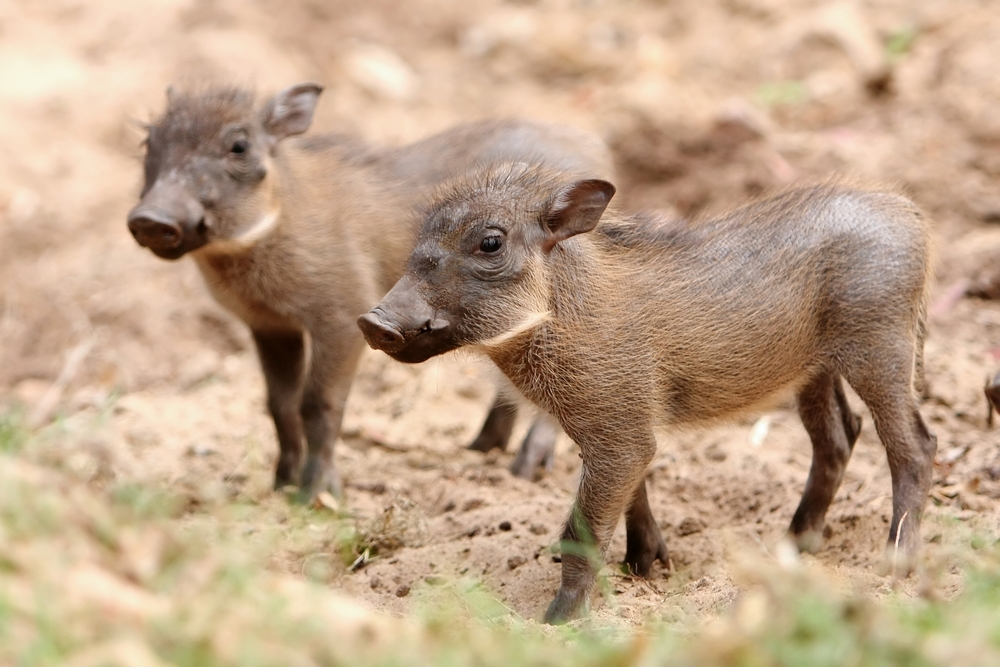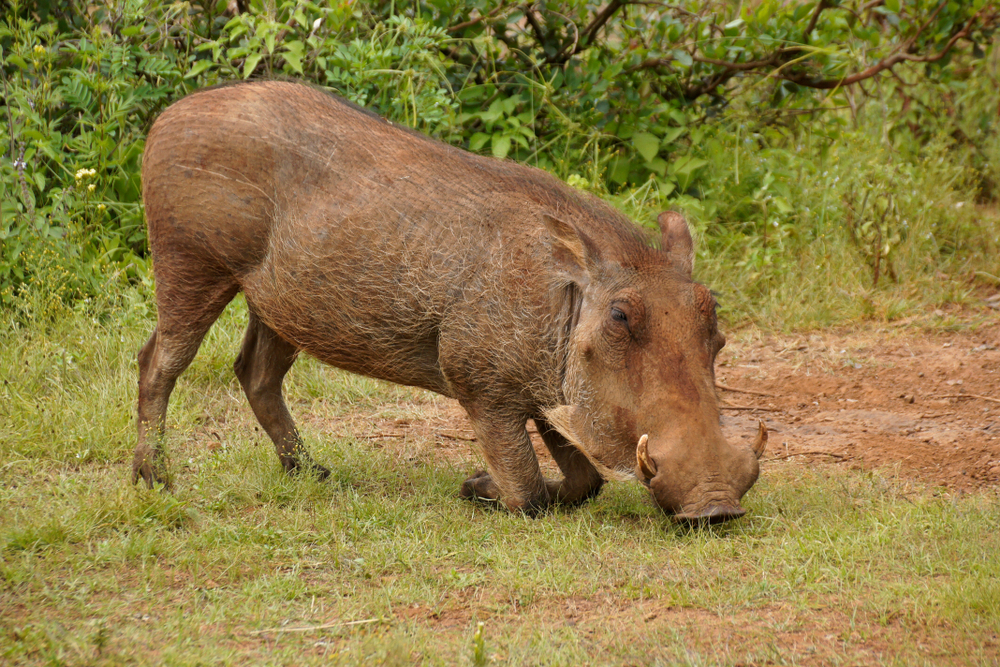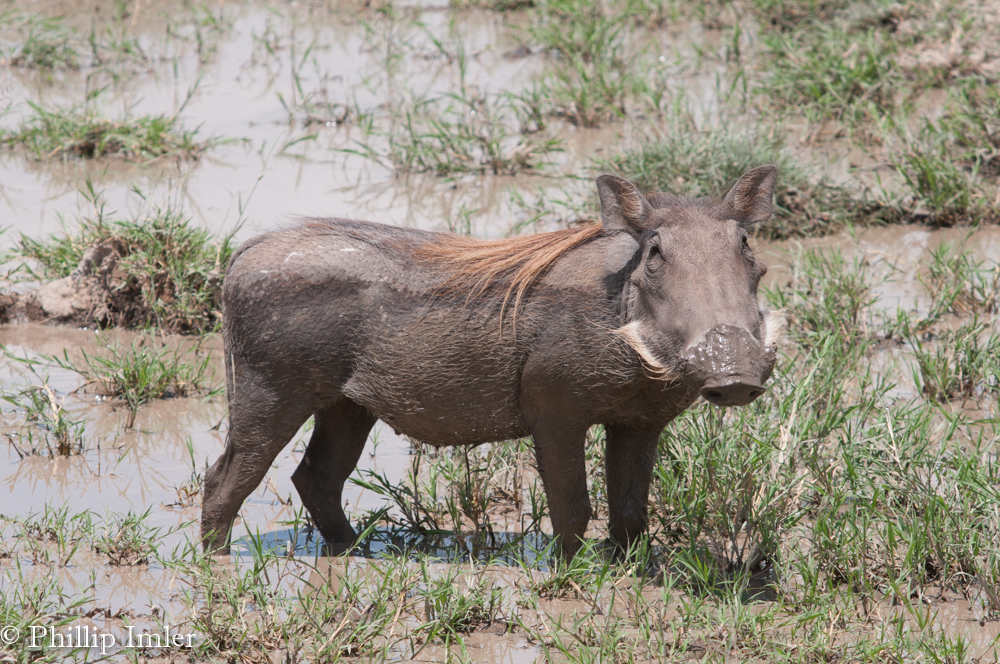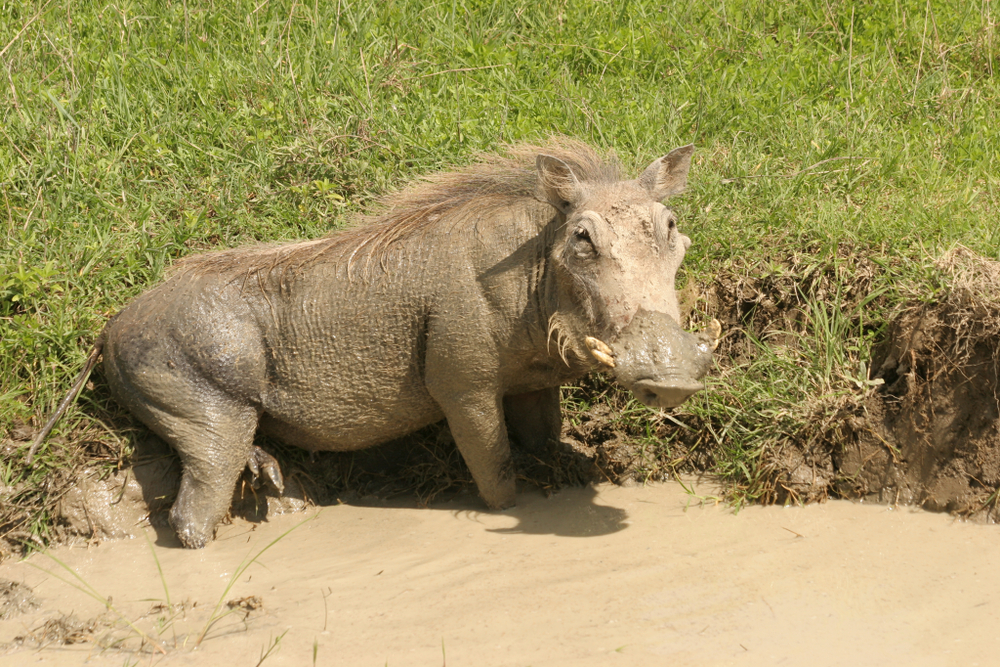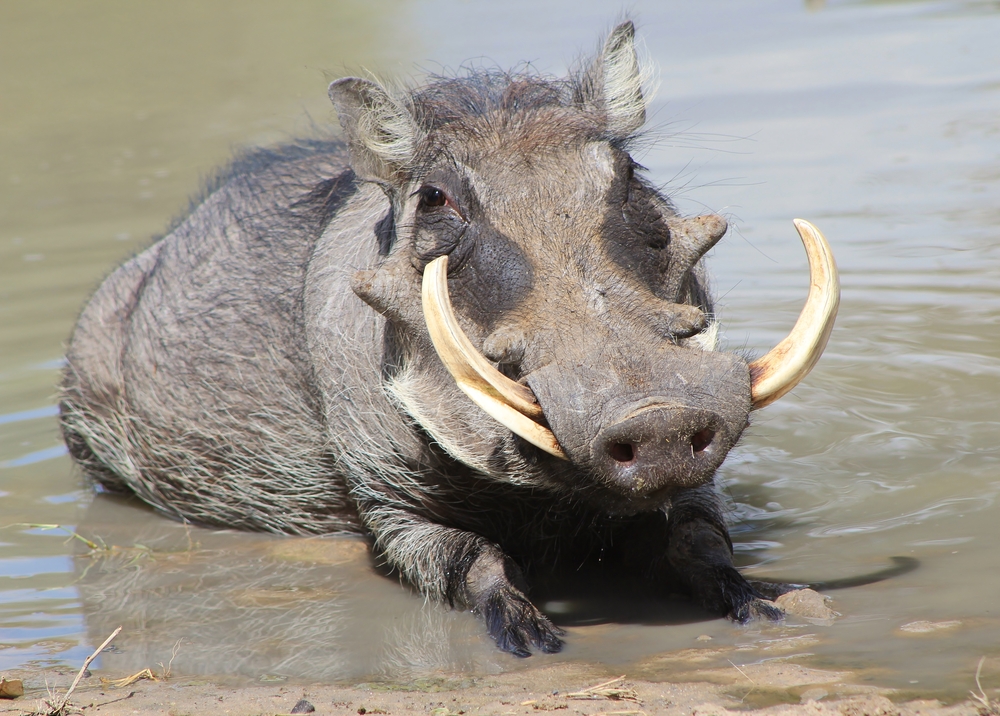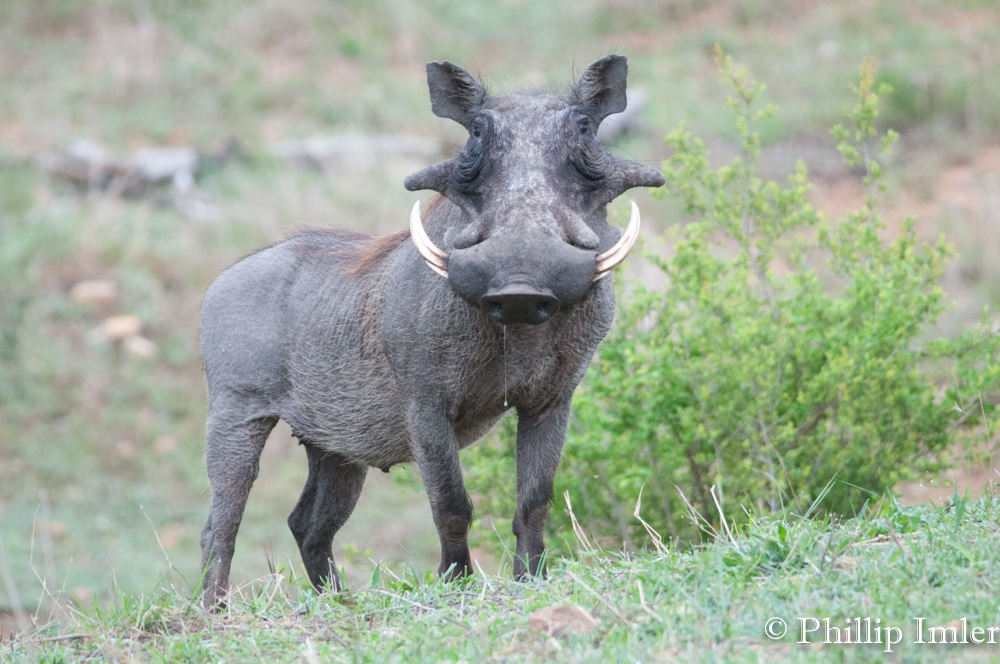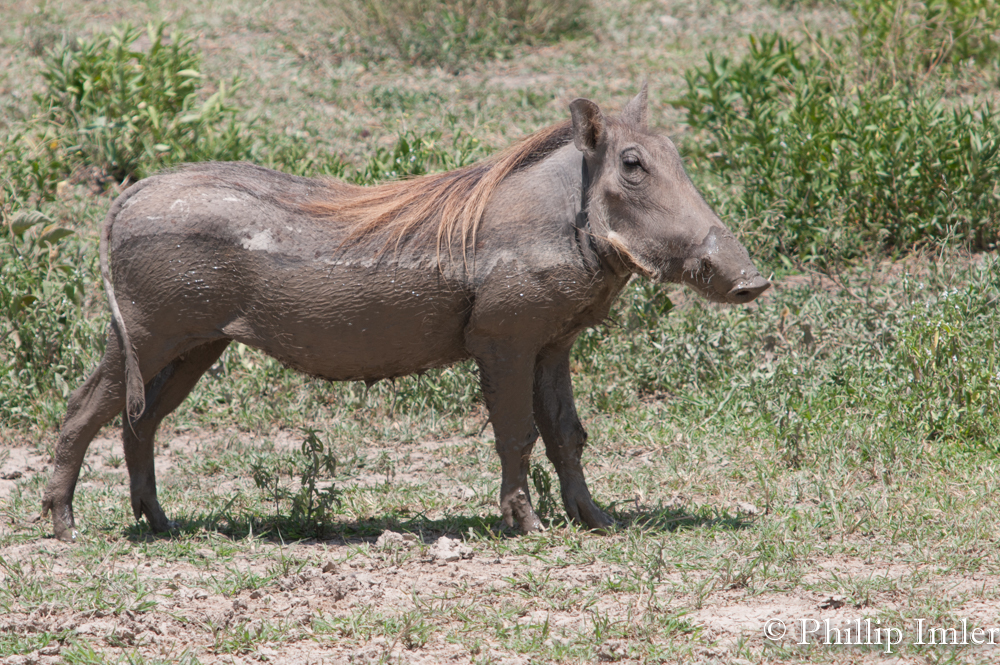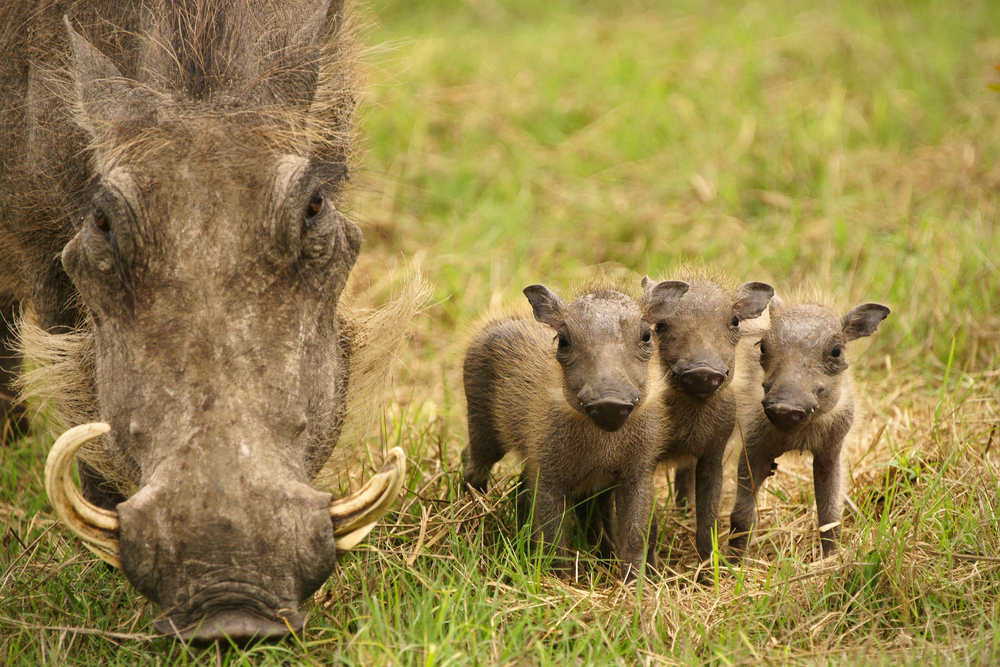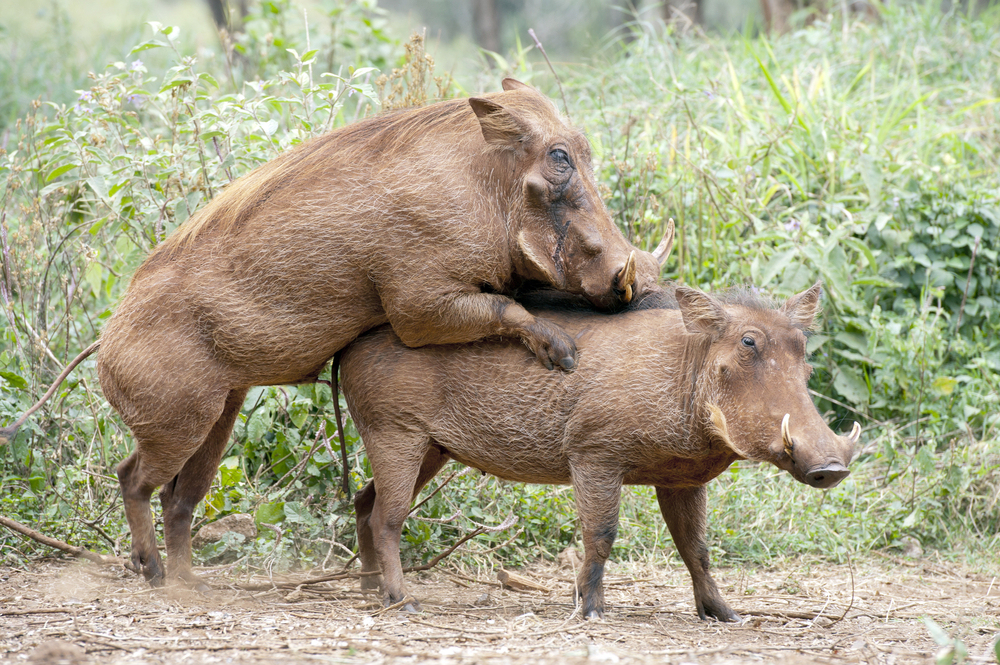Warthogs and domestic pigs (also known as swine or hogs) are two distinct species within the family Suidae, and while they share some similarities due to their common ancestry, they also have several differences that set them apart:
- Species:
- Warthog: Warthogs belong to the genus Phacochoerus and are native to sub-Saharan Africa. There are two species of warthogs: the common warthog (Phacochoerus africanus) and the desert warthog (Phacochoerus aethiopicus).
- Domestic Pig: Domestic pigs are members of the species Sus scrofa domesticus and are domesticated descendants of wild boars. They have been bred for various purposes, including meat production and as pets.
- Physical Appearance:
- Warthog: Warthogs have a distinctive appearance with facial warts (protuberances of tough skin and cartilage), upward-curving tusks, and a stocky, compact body. They are covered in coarse bristly hair that ranges in color from reddish-brown to grayish-brown.
- Domestic Pig: Domestic pigs come in various breeds, but they generally have a more uniform appearance with smooth, often pinkish or black skin. They lack facial warts and have straighter, shorter tusks compared to warthogs.
- Habitat:
- Warthog: Warthogs are primarily found in the wild in sub-Saharan Africa, where they inhabit a range of semi-arid habitats, including grasslands, savannas, woodlands, and scrublands.
- Domestic Pig: Domestic pigs are kept in captivity worldwide and are commonly raised on farms for meat production. They may also be kept as pets.
- Behavior:
- Warthog: Warthogs are wild animals and exhibit behaviors adapted to their natural environments. They are known for their digging and foraging behaviors, as well as their social groupings in the wild.
- Domestic Pig: Domestic pigs may exhibit a range of behaviors depending on their environment. On farms, they are often raised in controlled conditions and have behaviors influenced by human care and management.
- Diet:
- Warthog: Warthogs are herbivorous and primarily feed on grasses, roots, bulbs, and succulent plants in the wild.
- Domestic Pig: Domestic pigs are omnivorous and can be fed a diet that includes grains, vegetables, fruits, and sometimes animal byproducts.
- Conservation Status:
- Warthog: While warthogs are not typically considered endangered, they may face threats such as habitat loss and human-wildlife conflicts in certain regions.
- Domestic Pig: Domestic pigs are bred and raised for various purposes, including meat production, so their populations are controlled by humans.
In summary, warthogs and domestic pigs differ in terms of species, physical appearance, habitat, behavior, diet, and conservation status. While they share a common ancestry in the Suidae family, they have evolved separately and adapted to different ecological niches and human interactions.

































































